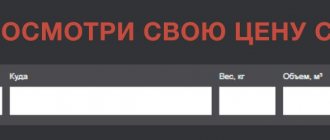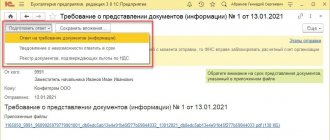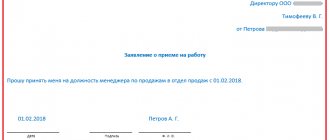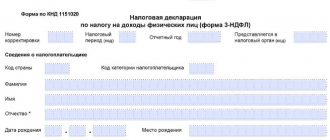Payment order - what is it?
In the activities of a budgetary institution, most settlements with counterparties are made through non-cash bank transfers.
Payment for services, work and goods in cash happens quite rarely, mainly through accountable persons. For non-cash payments, special forms are used - payment slips. A payment order is an instruction document (ID) that contains an official instruction from the payer to a banking institution to debit funds from the current account in favor of a third-party organization or budget.
One document has different meanings for subjects of non-cash transfers:
- For the paying organization, the payment is issued as permission for the bank to write off money from current accounts.
- What is a payment order in a bank? For a banking organization, a payment order is a working document on the basis of which operations are carried out to debit money from some accounts and credit them to others.
- For PP recipients, this is confirmation of payment for goods, works and services, repayment of tax and other obligations to the budget.
What is included in the list of payment and settlement documents
In addition to client statements, considered as the basis for non-cash transfers, there are also other types of documentation, which is considered as confirmation of the fact of fulfillment of debt obligations under a previously concluded contract or agreement. These include cash and sales receipts, strict reporting forms, as well as the previously discussed payment orders. The specific format depends on the specifics of the transaction performed.
It is important to take into account that the issuance of documentary confirmation is required only in cases where mutual settlements are made using cash or a card, while the execution of a non-cash transfer implies that the payer remains in possession of the original payment order. A buyer who makes a purchase at a retail outlet is provided with a cash receipt and, upon receipt of the appropriate request, a sales receipt. It is worth noting that the legislator has not approved a standard form for the latter type of documents, which means that an individual entrepreneur or organization has the right to use an independently developed template. The main thing is that its content contains details that allow you to establish the details of the transaction performed - date, number, name, list of nomenclature items, cost, as well as signature and decoding of the full name. responsible person.
Individual entrepreneurs interacting with individuals. persons in the field of service provision also have the right to issue a SSO (strict reporting form). They are printed using specialized services or ordered from a printing house. At the same time, a new category of legal entities—the self-employed—may limit themselves to sending an electronic version of the check generated in the “My Tax” application.
Why do you need a payment order?
As we noted earlier, the document is used by Russian economic entities to carry out various types of payments. Main directions:
- payment of wages to staff;
- payment of insurance premiums and taxes to the relevant state budgets;
- repayment of debts to suppliers and contractors;
- transfer of advance payments, bank guarantees under government contracts and agreements;
- acquisition of securities, foreign currency, precious metals;
- transfers between current accounts of one economic entity;
- payment of penalties, fines, penalties, payments for state duties, fees.
This is not a complete list of transactions that are processed by payments.
Debt payment document in GIS Housing and Communal Services
The debt payment document forms the opening balance. Beginning balance is the account balance at the beginning of the period, which is calculated based on previous transactions. The debt payment document must be loaded into the system before you start uploading current payment documents in order for the initial balance of personal accounts to be correctly displayed.
In order for the consumer’s personal account to correctly display the amounts that he must pay, reflect the debt and advance payments in the debt payment document. It is not difficult to place a debt payment document in the system. To do this, in your personal account of the GIS Housing and Communal Services, go to the section “Payment for housing and communal services” - “Payment documents”.
Specify the billing period for which you want to enter information about the debt. For example, in February you want to post accruals for January. In the billing period field, enter “01.2018” and put o.
Now select the personal account for which the debt payment document will be generated. Click on the “Christmas trees” to the right of the personal account number you need and select “Add” – “Debt payment document”.
Go to the “Fee Calculation and Recalculations” tab and then select only one period preceding the month for which you are making charges.
In the second column, under the month, enter the amount of consumer debts or advance payments at the beginning of the month for which you are making accruals. The amounts will be transferred automatically to the “Total payable for the billing period” column. Save the information you entered. Now you can start generating current payment documents.
Algorithm for adding a new payment document
You can create several payment documents for each personal account in one billing period. You can add an additional payment document to your personal account, provided that the previously created PD is in the “Posted” status.
To create a new payment document, select “Add” in the context menu, then select “Current payment document” in the drop-down list.
Specify the billing period for which you plan to enter information about calculating the amount of payment for housing and communal services, put o and select the personal account number for which you need to add the current payment document.
In the “Fee size calculation and recalculations” tab, fill in all the fields that are available for editing. Be sure to fill out this tab, otherwise the system will not allow you to save the payment document.
Filling out the “Reference Information” tab is optional. If the consumer has debts for housing and communal services, place the information in the “Instalment” and “Penalties and Legal Expenses” tabs.
If you do not have information on any of the lines proposed by the system, delete such a line: for example, the consumer was not charged penalties because he paid utility bills on time. But delete services carefully so that only those that you provide remain. Return to the “Information about the payer and service provider” tab. Select the payment details of the account to which the money will be received and fill in the fields: - debt for previous periods; — advance payment at the beginning of the billing period; - money paid; — payments received up to and including a certain date are taken into account; — date of the last received payment. The fields “Amount payable for the billing period” and “Total payable including debt/overpayment” will be filled in automatically. But the “Total payable including debt/overpayment” field is now calculated without taking into account payment.
Only after entering all the information, save the information.
How many copies should there be?
For one financial transaction, 4 copies of the payment order are made. The first copy is kept in a banking institution, and on its basis money is debited from accounts.
The second and third copies are intended for the recipient and his bank. That is, one copy remains in the recipient’s bank, on its basis the money is credited to the current account. And the second is attached to the bank statement, which is transferred to the recipient.
The last copy, with the bank’s mark of completion, is returned to the paying institution. That is, the payment is attached to the bank statement as confirmation of the execution of the PP.
Please note that the number of copies may be different, depending on the circumstances and conditions of sending the wire transfer.
Legal forms of non-cash payments
Let's consider the legal forms of non-cash payments.
In accordance with Art. 861 of the Civil Code of the Russian Federation, both cash (Article 140) and non-cash forms of payment are available to Russian citizens, unless it is related to their commercial activities. However, the amount is not limited.
Legal entities, as well as individual entrepreneurs, mainly use non-cash forms of payment. However, it is also possible to make payments between them in cash, if this does not contradict the law.
Payment orders are a form of non-cash bank payments in which the account depositor (payer) instructs his bank to transfer a certain amount to the recipient's account, which can be opened in any bank.
When using this common form of non-cash payments, the bank, on behalf of the payer, undertakes to transfer the specified amount to the account of the person indicated in the order, opened in this or another bank. Funds are written off from the payer's account. Money is transferred within the period approved at the legislative level or established in accordance with the law, or in a shorter period provided for by the bank account agreement.
Based on the above definition, a bank transfer has the following characteristics: money is debited from the payer’s account; the funds are transferred to the account indicated in the order by the payer; the transfer execution period is established by law or shorter (if this is provided for by the parties to the bank account agreement).
There are two types of payment orders by agreement of the parties: urgent and early.
The use of urgent payment orders is possible in the following cases:
- advance payment, which is made before goods are delivered, work is performed, or services are rendered;
- payment after the goods have been shipped, that is, by direct acceptance of the goods;
- partial payments for large transactions.
It is possible to pay the payment order in full, or to pay in installments if there are insufficient funds in the payer’s account (a mark to this effect is placed on the payment document):
- the buyer (payer) provides the bank with 4 (or 5) copies of payment orders. The bank gives one of them back to the payer as a receipt;
- the bank in which the buyer’s account is opened, based on the first copy of the payment order, debits the specified amount;
- the bank whose services the buyer uses sends two copies of the payment order and money to the bank where the seller’s account is opened;
- the bank whose services the seller uses, on the basis of the second copy of the payment order, credits funds to the account of the seller (recipient);
- Banks issue bank account statements to their clients.
Is a payment order a legal document?
A payment is recognized as an official legal document if, when drawing it up, all the rules approved by Order of the Ministry of Finance dated November 12, 2013 No. 107n are followed. In other words, the software must meet the following requirements:
- The form is in the exclusively unified form OKUD 0401060. The current form of the document is approved in the Regulation of the Bank of Russia dated June 19, 2012 No. 383-P. Please note that the payment can be issued both on paper and electronically.
- Compliance with chronological order when numbering is mandatory. What is a payment order number? The serial number of a payment order is a digital value that was assigned to the document when it was generated, and in compliance with chronology.
- The details are filled in taking into account the type of payment. For example, for transfers to the budget, tax fields must be filled in. Details in the article “How to fill out fields 106 and 107 in a payment order.”
- The document is signed by the responsible persons and certified by the seal of the organization. When generating a payment in electronic form, the form must be signed with an electronic signature that meets the requirements of cryptographic protection.
How to make corrections to primary documents
If, after a document has been accepted for accounting, an error is discovered in it, it is no longer possible to replace it with a new one, you can only correct the existing one. An exception is invoices and UPD. Correction forms are provided for them.
To make a correction to a paper document, you need to follow these steps:
- Cross out the incorrect text or amount with one line. So that you can read the corrected one.
- Above the crossed out text, write the corrected text or amount.
- Confirm the correct data with the entry “Corrected” and the signatures of the persons who compiled the document being corrected, indicating their last names and initials (other details that allow identifying these persons), indicate the date the corrections were made.
The organization can decide for itself how to make corrections to electronic primary documents. The chosen method must be recorded in the accounting policy.
Can a financial institution refuse to issue a check?
When paying bills at a bank, the Federal Tax Service or other organizations, the client must require a supporting document. The issuance of receipts is proof of a successful transaction.
A refusal to issue a payment document may be due to the desire of the payer to receive several copies at the same time. According to the Tax Code of the Russian Federation, financial institutions are authorized to issue only original certificates. Issuance of a duplicate is possible only after a written statement from the payer about the loss of the original document.
Company managers have the right to refuse to obtain a certificate for third parties without the presence of confirmed authority of the representative, for example, a notarized power of attorney, which states permission to issue documents in the name of the bearer.
Payment confirmation will not be issued if the transaction is incomplete or canceled during the process. Some types of transactions made in remote service channels do not allow you to reprint a receipt. For example, transferring funds from a plastic card account using the SMS notification service. The client receives a payment confirmation code on his phone, he enters the data, and the money goes to the sender’s account. In this case, the proof of payment is not a check, but an SMS about the sending and completion of the transaction, or an extract from a bank card account.
How to prove payment of taxes?
Payments to the Federal Tax Service are the responsibility of every citizen of the Russian Federation. Every year, Russians pay off debt for land, property, and cars. Failure to confirm payment not only entails fines in the form of penalties, but may also result in a ban on traveling abroad.
The Federal Tax Service is a government agency and is required by law to accept the following types of documents as proof of payment:
- Cashier's check.
- An account statement signed and stamped by an authorized person.
- Receipt order.
- Another document confirming the fact of depositing funds.
As another certificate, a check or form in the form of a financial institution is issued, which confirms the repayment of the taxpayer's debt.





